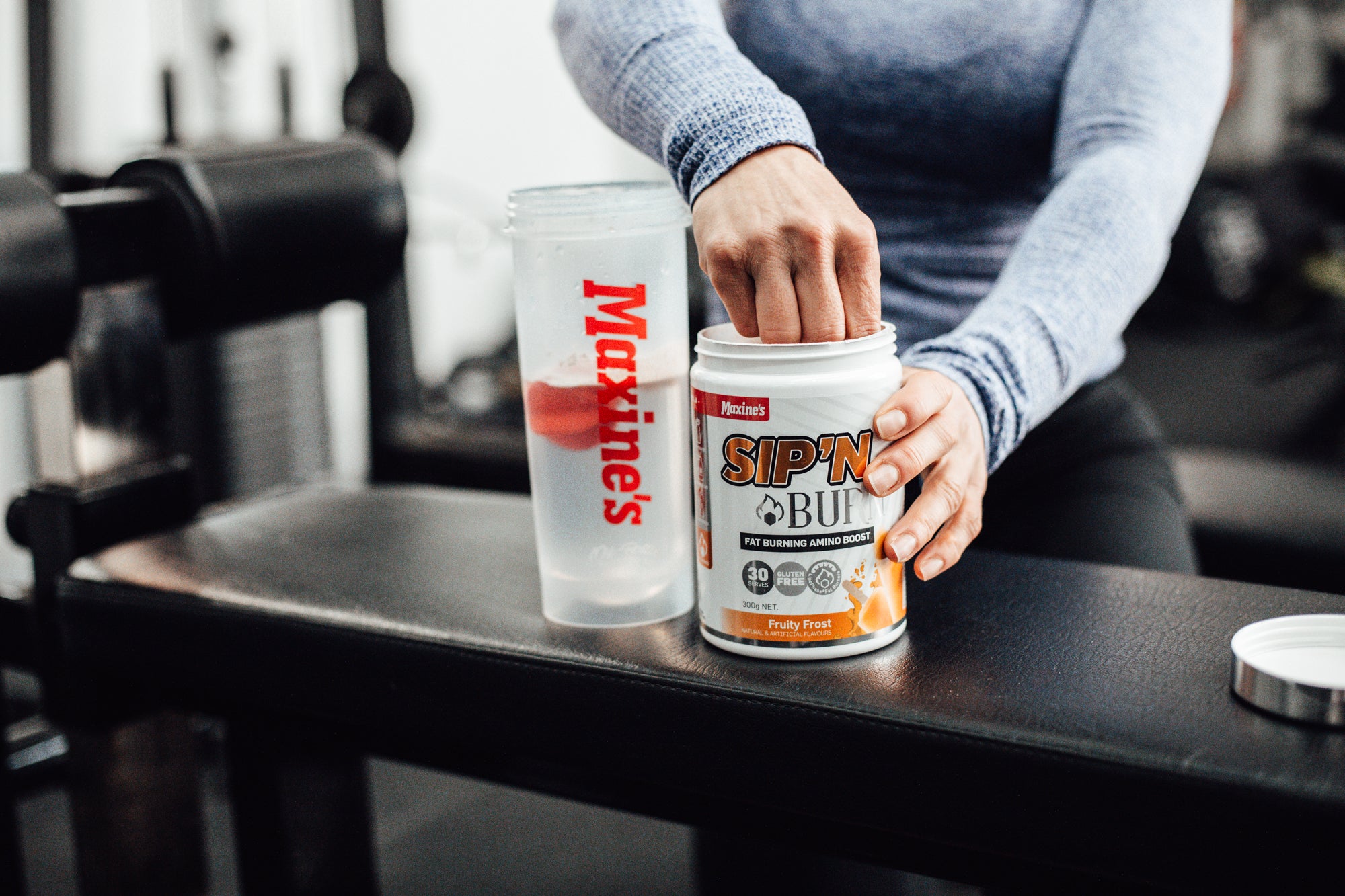
Your free ultimate diet & nutrition guide
Whether you're toning up or dropping a dress size, our Ultimate Nutrition & Diet Guide is what YOU need! With everything you need to know, including full meal and exercise programs for all levels, it's your one stop shop to getting the body you want!
Fill in your email below to download your free nutrition and training guide:
Here's What You Get
Whether you're toning up, training from home or hitting the gym we've got everything YOU need! Grab your training, nutrition, supplements guide and more in a single FREE download!
Whether you're toning up, training from home or hitting the gym we've got everything YOU need! Grab your training, nutrition, supplements guide and more in a single FREE download!
-

Tips, Tricks and More
Expert tips, secrets and more from our team on how they stay in shape.
-

Free Exercise Plan
Full 7 day Training Program designed by the our expert trainers.
-
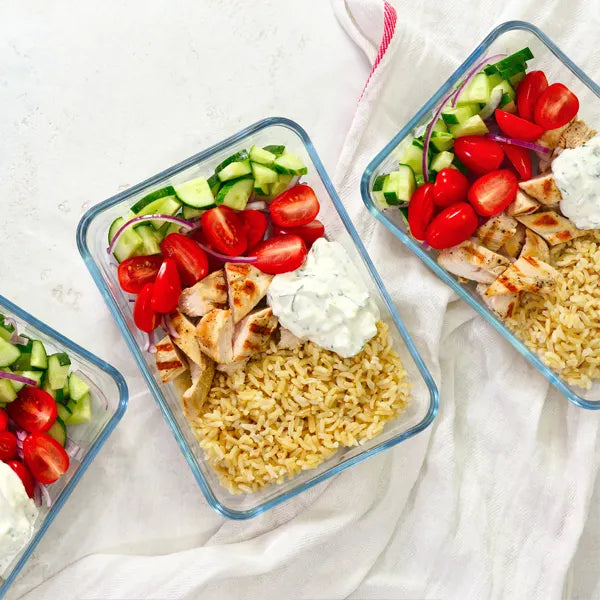
Free Nutrition Plan
Know what to eat and when to eat it and how much you need to reach your fitness goals.
-

Supplement Guide
Find out what supplements work, when to take them and what works best.
-

Home Workouts
No gym? No problem! We've included both gym and home workout plans for you.
-

Free Weight Loss Guide
Have you tried diet after diet and still get the same result? Try something different!
-

Look & Feel Young Guide
Find out how to look 20 years younger and get in the shape of your life!
-
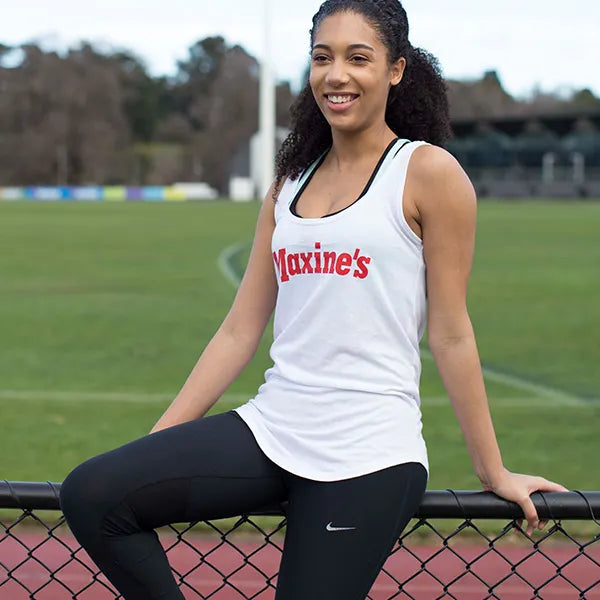
New Mum Guide
Want to get your body back after giving birth? Get our free guide to bouncing back!
Choose Your Nutrition Goal
When starting out on any training program it’s important to start off in the right way. In this section we will run you through the basics of training. We then have 2 different options to get you started:
When starting out on any training program it’s important to start off in the right way. In this section we will run you through the basics of training. We then have 2 different options to get you started:
-
Tone & Shaped
Lose Body Fat While Adding Shape
Getting in great shape is not something you can do in a few weeks. In fact getting in great shape and staying that way is more about adopting positive lifestyle changes rather than going on a diet or joining a gym. If you are looking for a sustainable and easy to follow plan that will help you lose fat and tone up this is the plan for you! -
Fit & Strong
Gain Lean Muscle & Improve Strength
Getting lean and strong is often the goal of women that have been training for some time who are carrying some body fat. Your main goal should be to build or maintain lean muscle while stripping fat. And we'll show you exactly how to do that. We recommend you follow this plan for a minimum of 6 weeks and you should start seeing excellent results!
Choose Your Workout Level
When starting out on any training program it’s important to start off in the right way. In this section we will run you through the basics of training. We then have 2 different options to get you started:
When starting out on any training program it’s important to start off in the right way. In this section we will run you through the basics of training. We then have 2 different options to get you started:
-
Beginner
3 Days Per Week Whole Body Routine
This program is designed for trainers who are just starting out and who haven’t done much training before. It is designed to build a strong base over several months before stepping up to a more intense training program. Use this program if you are new to training or haven’t done any weight training for 12 months or more. -
Advanced
4-6 Days Per Week Split Body Routine
This program is designed for trainers who have already been training for a while or who have reasonable experience with weight training, what we would term as an intermediate level trainer. Use this program if you are currently weight training on a regular basis, or you have a reasonable amount of weight training experience.
Free Weight Loss Guide Included
6 Tips to Losing Weight & Staying Fit
6 Tips to Losing Weight & Staying Fit
-
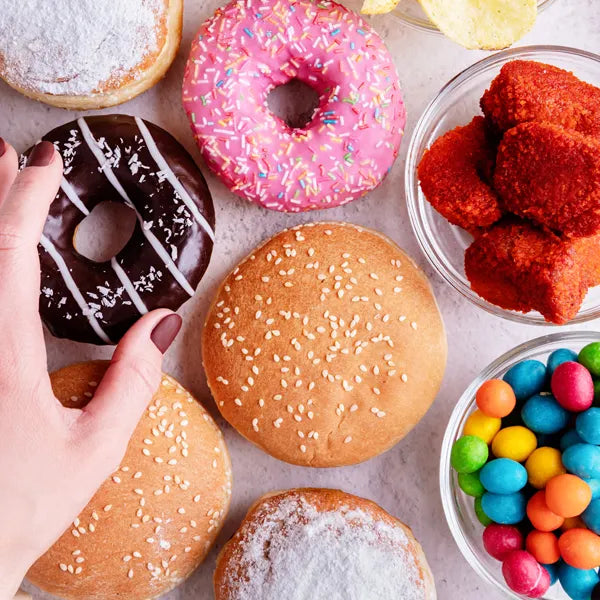
Reduce Carbs & Sugar
Sugar and starches feed the gut bacteria that tend to have a negative effect on your health.
-

Reduce or Eliminate Gluten
What actually is it? Well it's a general term that describes a class of protein usually found in grains like wheat and barley.
-

Eat More Veggies
Veggies, particularly highly fibrous veggies like cabbage, broccoli, onions, string beans, squash, zucchini, lettuce, kale...
-
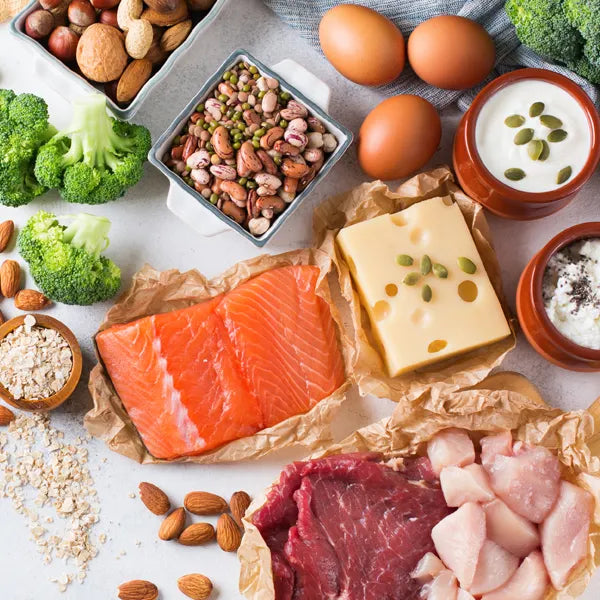
High Quality Protein
Now if you are into training, chances are you are already doing this. But when we say high quality, what do we mean?
-
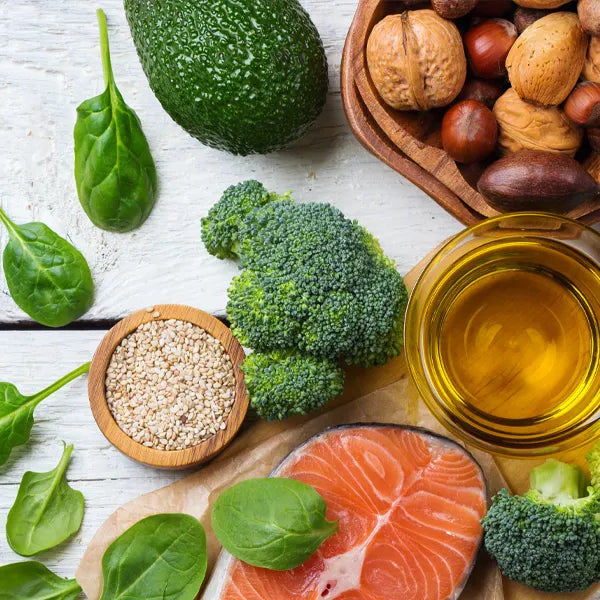
More Healthy Fats
Cutting back your sugar and carb intake to improve gut health, what do you replace them with? Your choices are protein or fats.
-
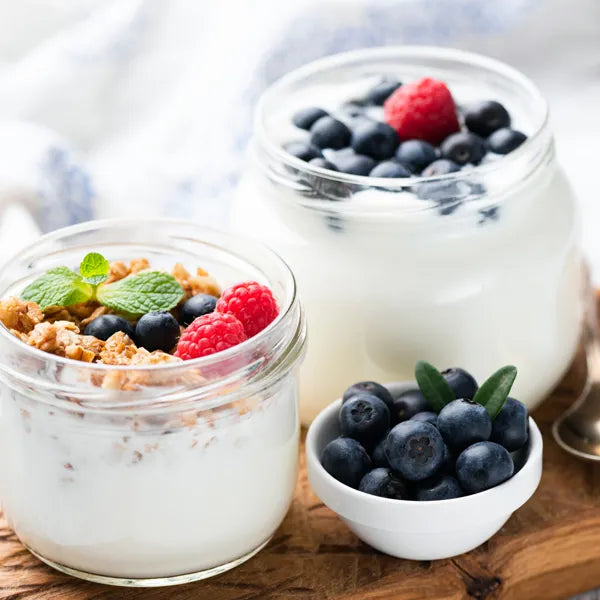
Probiotics & Fermented Foods
Probiotics are popping up in lots of different foods these days. A great source of probiotics is yogurt. However there are lots of other sources.
Nutrition: Everything You Need To Know
Basics
If your goal is to tone up, burn fat and get into great shape then there are some basic guidelines you should follow to help you get there.
If you follow these principals you will be well on the way to consistently making good choices, whether you’re at the super market or dining at the best restaurants.
MUSCLE IS THE KEY TO BURNING FAT
Fit and strong is the new skinny, and a toned athletic body looks that way because of well-developed muscles. This doesn’t just happen by accident. A good exercise program including weight training and cardio will shape and tone your body to give you that much sought after look. The added benefit of a toned body is that muscle increases your metabolism, quite simply, the more toned you are, the more fat you burn, even when you are resting.
5–6 SMALLER MEALS PER DAY
Everyone’s metabolism will respond to regular nutrition by working at higher rate. You will BURN more kilojoules, get leaner, have more energy to for your daily activities and exercise, and generally feel great. Many women believe they will lose weight by drastically reducing their food intake. Unfortunately your body responds by shutting down your metabolism to conserve energy which slows fat loss right down. A better approach is to spread your daily food intake over 5 – 6 meals which will keep your metabolism high and maximise fat loss.
PROTEIN SERVE AT EACH MEAL
To stimulate fat loss and muscle toning you need a constant intake of quality protein every day. The best way to do this is to make sure you have a protein in each of your daily 5 – 6 meals.
DON’T SKIP BREAKFAST
This is often referred to by nutritionists as the most important meal of the day, and for firing up your fat burning metabolism breakfast is super important. This is because during the night most people won’t have eaten for around 8 hours or more, so the body will be in starvation mode and your metabolism will be running slowly. Breakfast kick starts your metabolism. Quality protein and slow digesting carbs like oats is the perfect way to start your day.
DRINK PLENTY OF WATER
Water plays a crucial role in every part of your metabolism. You need it to burn fat, produce energy, tone muscle plus a myriad of other physiological processes. If you exercise a lot you will need even more. Aim to drink about 2 litres or more of plain or mineral water every day.
AFTER EXERCISE
If you regularly work out, or perhaps you play strenuous sport, then you should always aim to have some good quality protein and carbs within an hour of your activity. This will help you recover much faster so you will be less fatigued and ready to train or play again sooner. A Maxine’s BURN shake and some fruit is a great recovery nutrition plan.
VEGETABLES ARE KING
While protein is a key nutrient to help you get lean and toned, plenty of fresh vegetables are a must. Vegetables are choc full of vitamins, minerals and fibre, and will help keep your body healthy and in optimum shape during the rigours of exercise and dieting. Try to include several servings of fresh vegetable in at least 2 – 3 of your daily meals.
CARBS, YES OR NO?
Carbs are often viewed as taboo by many women trainers. What is the truth? It depends on your goals. If you are already in good shape and looking to maintain your condition then a moderate intake or good quality ‘clean’ carbs like wholegrain cereals, brown rice and sweet potato are recommended. However for general health you should reduce or eliminate sugary, starchy and processed foods like soft drinks, juices, bread, cakes and biscuits. If your goal is to strip fat, and lean up then watching carbs is the key. Reduce starchy carb foods but some carbs are always required to help you burn fat and keep your metabolism functioning properly. We will cover this in more detail in our recommended diet plans.
WATCH YOUR FAT INTAKE
Your body need a moderate amount of certain types of fats to maintain good health. These fats, known as essential fatty acids are used for many physiological processes in your body, from making hormones through to building new cells. Foods like nuts, olive oil, seeds and avocados are all good sources of EFA’s. Fat’s from fish are also excellent. Eating fish twice per week or taking fish or krill oil supplements are also recommended. The fats you want to avoid or reduce are the saturated fats found in the fat you see on meat and in foods like butter and cream. So cut right back on foods like butter, cream, whole fat milk, and fatty meats. Also be careful of hidden fats. Many processed foods and fast foods contain high levels of these fats so always check the food labels.
PROCESSED FOODS
Most foods that come in packets, bags or boxes fall into the category of processed foods. Processed means that the food has been either mixed, cooked or treated in some way to change it from it’s raw state. Be careful of processed foods because many have added sugars, fats, salt and other food additives that can have a negative effect on a shaping and toning program. Read the nutritional panels and look for protein, fat, sugars and sodium levels.
EATING OUT
One of the big challenges for anyone who is watching their weight is what to choose when eating out. Basically you need to stick to the principals of a good quality protein source, fresh vegetables, while keeping carbs and fats moderate. Fish, chicken or red meat with vegetables or a salad are great dining out options. Avoid or reduce breads, pastas and rice intake and if you must have dessert then share with a friend or choose a lighter fruit based dish.
TAKE AWAY FOOD
Most takeaway foods are not ideal nutritionally so you must be very careful with your choices. High carb foods like pizza and pasta are ok for an occasional treat but in general should be avoided. Deep fried foods like fish and chips are also bad as they combine high fat with high carbs. Hamburgers, wraps and various fast food meal deals also tend to be high in carbs, fat and kilojoules. Better choices include salads, some sandwiches, and many Asian dishes of vegetables and meat, although some sauces can be high in fat.
ALCOHOL
If you are dieting to get into great shape then alcohol intake should be substantially reduced or eliminated. It adds empty calories to your diet and can play havoc with your metabolism. If you are going out and want to enjoy a drink or two, that’s ok, but remember moderation. Drink at least a glass of water for every alcoholic drink you have. Limit yourself to a few drinks spread over the night. Choose drinks than have less kilojoules like dry wine. Mixed drinks can be very high in sugar so avoid these.
Tips
Some people seem to be blessed with a metabolism that makes it’s relatively easy to maintain a healthy weight. For the rest of us, we simply need to keep working at it! And that’s the key to staying in great shape and maintaining a healthy weight; you must always be conscious of what you eat, and always try to be active.
We know that life has its ups and downs, and sometimes your nutrition can get off track, so we want to give you a handful of tips that you can follow for weeks, months, years, in fact the rest of your life, to help you reach and/or maintain a healthy weight for life.
FIRSTLY, DON’T GO BACK TO OLD HABITS!
You’ve worked hard to reach your target weight, so the number one rule is DO NOT go back to your old eating habits. It might be tempting to “treat yourself” as reward for reaching your goals, but going back to eating excessive carbs, processed foods and binging on junk will undo your hard work very quickly.
We’re not saying you can have a treat here and there, just that if you continue to use the principals you learned while losing weight you should maintain your healthy weight.
EAT 5-6 DAILY MEALS
You should be eating 5–6 smaller meals per day to keep your metabolism high and hunger away.
In each meal you will be eating a healthy protein portion accompanied by a selection of fresh vegetables and an optional healthy carbohydrate choice. The key here is moderation. Your plate should be about ¼ protein, ¼ healthy carbs and ½ fibrous non-starchy vegetables.
Protein
Protein is normally associated with animal sources like steak, chicken and eggs however proteins occur naturally in many foods including vegetables, rice and pasta. The quality of protein is measured in a number of ways, but basically it is a gauge of how well we humans use it to repair and grow tissues in our bodies such as muscle, skin, hair and nails.
Animal sources generally rate higher than vegetable sources. Incidentally, pure whey protein, the main constituent of Maxine’s BURN, has the highest rating of any Protein available.
Most animal protein like meat, eggs and even fish generally contain some fats, so it is important not to over indulge in these foods. For females an uncooked serving size of about 100 – 150g is recommended. This will vary a little based on your size and metabolism. As a general rule, each portion should be about the size and thickness of the palm of your hand.
Vegetables
The general rules when choosing vegetables is to select the fibrous and leafy vegetables like broccoli, celery, spinach and capsicum, but reduce or avoid the starchy vegetable like potatoes, pumpkin and peas. This is because these starchy vegetables contain relatively high levels of carbohydrates, which is what you are trying to reduce.
Raw vegetables in salads are probably the healthiest way to eat. When cooking your vegetables make sure you don’t overcook or you will lose a lot of the goodness they contain. Steaming, microwaving and stir frying are the recommended ways to cook. You can season with herbs and garlic and use a little olive oil, but go easy as it is fattening if you use too much. The quantity of these vegetables you can eat is generally unlimited, unless otherwise stated. You should try to have at least three cups of vegetables daily.
There is a huge selection of vegetables to choose from, so with a little imagination and some good recipes, you can make delicious and nourishing vegetable dishes to accompany your protein serve.
Carbohydrates
In general terms you should always opt for unprocessed and complex carbohydrates like wholegrain cereals, wholegrain and wholemeal breads, brown rice, pastas and starchy vegetables. There is a classification that Nutritionists and Food Scientists have developed which rates carbohydrate foods. This rating is called the Glycemic Index or GI. The GI of a food is really just a measure of how quickly its carbohydrate content is digested and absorbed in the human body. This is determined by measuring the amount of sugars circulating in your blood after eating that food. The GI of food is measured between 0 and 100.
Foods containing no carbohydrates have an effective GI value of zero, while pure Glucose sugar has been rated with a GI of 100.Virtually all carbohydrate foods will have a value somewhere in between.
When choosing carbohydrate foods you should aim to go for foods with a lower GI. Why? Because these foods digest and absorb more slowly to provide sustained energy. They are not easily converted to fat so they are less likely to make you gain weight.
Fast absorbing carbs, like sugar, white flour and soft drinks have a higher GI. These types of foods lead to a rapid rise in your blood sugar levels. Your body will always try to keep blood sugars constant so it quickly acts to convert excess sugars to fatty acids which are then stored in your body’s fat tissues. This is why lots of sugary foods and high carb junk foods make you fat!
There are several different interpretations of GI levels.For our purposes we categorise carbohydrate foods as:
- Low GI – The Glycemic Index is less than 40.
- Medium GI – The Glycemic Index is between 40 and 70.
- High GI – The Glycemic Index is between 70 and 100.
There are plenty of good low GI options which will make a big difference to your health and your ability to stay at a healthy weight. After a while you will get to know what common foods you should be eating and what you should be avoiding. These days many foods actually list the GI on their labels. Try to ensure that at least one of your daily meals contains a reasonable serve of a good quality lower GI carbohydrate food like pasta, wholegrain bread, cereals or starchy vegetables. Eating one or two meals with a moderate serve of low GI carbohydrates each day will in most cases brings people into weight equilibrium. If you still continue to lose weight, increase the amount of carbohydrates you eat during the day. If you start to gain weight, cut back on the carbohydrates and up your protein slightly.
A quick word of warning, just because a carb is low GI doesn’t necessarily mean it’s healthy. To summarise there are 2 main things to look for when choosing your carbohydrate foods:
Look for healthy carbohydrate foods that are raw or relatively unprocessed like fresh fruit and vegetables, wholegrain breads and cereals, brown rice and pastas.
Choose healthier carbohydrate foods that have a low or medium Glycemic Index and avoid carbohydrate foods with a high Glycemic Index.
Healthy Snacks
We recommend you eat at least two snacks daily, and if you get hungry in the evening after dinner then you have the option of eating a further snack before bed.
The general rule of thumb is to avoid foods that are mainly carbohydrate based like bread, biscuits, cake, rice and cereals. Also read the nutritional panels on food labels and look for foods that contain low levels of carbs, sugars and fats.
Most fruits are great snack choices, however all fruits contain some sugars so we recommend limiting yourself to 1–2 pieces per day. Maxine’s make some great guilt free snacks including our high protein BURN Bars and Cookies. One bar or cookie per day as one of your healthy snacks is an easy and convenient way to stay on track.
Here are some other healthy snacks ideas:
- Nuts – 20g (small handful).
- Vegetable sticks (carrot, celery, capsicum, etc.) with 20g low carb dips like Hummus, Tzatziki, or cottage cheese.
- ½ small piece of fruit and 6 almonds to slow digestion of fruit sugars.
- ½ cup berries (strawberries, blueberries, raspberries, etc.) with tablespoon of natural unsweetened yogurt.
- ½ cup fruit salad and tablespoon of natural unsweetened yogurt.
- Small tin of flavoured tuna.
- Slice of tasty cheese, slice of tomato and olive, wrapped in a lettuce leaf or a slice of ham.
- 1 rice cake spread with peanut butter and cottage cheese.
- Hardboiled egg.
For your optional evening snack, as long as you have had a good day and stuck to your diet, you can treat yourself to 2 squares of Dark Chocolate. Look for chocolate with at least 70% Cocoa solids which is very high in antioxidants and beneficial nutrients.
YOUR BEST DRINK CHOICES
One of the biggest ways we consume sugar is from drinks containing high levels of sugar. Most people understand soft drinks contain lots of sugar, however many people don’t realize that supposedly healthy drinks like fruit juice, sports drinks and milk also contain high sugar levels.
The following drinks are fine to have:
- Water (plain, mineral, spring). Drink at least 2 litres per day, more if you exercise.
- Tea, with or without milk – use artificial sweetener, maximum 2 – 3 cups per day.
- Coffee* with or without milk – use artificial sweetener, maximum 2- 3 cups per day. *Avoid latte’s and cappuccino’s as they are mostly milk.
- Diet soft drinks (if you must) – maximum 1 per day.
- Dry white or red wine – one glass 2 – 3 days per week.
WHAT DRINKS SHOULD YOU AVOID?
- All soft drinks.
- All juices and juice based drinks.
- All sports drinks and ‘health drinks’.
- Cordial (diet is ok, 1 glass per day).
- All unflavored and flavored milk based drinks.
- Beer and spirits.
In an ideal world we would like you to avoid drinking any of the non recommended drinks. However we understand that sometimes circumstances make it difficult to stay on the straight and narrow!
The simple rule of thumb is, the more of these you drink, the more you will slow or stall burning your fat. Try to avoid these types of drinks wherever possible. If you are out socializing, limit yourself to one or two drinks and drink plenty water, mineral water or soda water with a slice of lemon.
Healthy Fats
Your body need a moderate amount of certain fats to maintain good health. These fats, known as essential fatty acids (EFAs), are used for many physiological processes in your body, from making hormones through to building new body cells. Foods like nuts, olive oil, seeds and avocados are all good sources of EFA’s. Fat’s from fish are also excellent. Eating fish twice per week or taking fish or krill oil supplements are also recommended.
The fats you want to reduce or avoid are the saturated fats found in foods like butter and cream and in the fat you see on meat. Always choose leaner cuts of meat, remove visible fats from meat and remove skin from chicken. Choose low fat dairy foods and moderate or avoid intake of fatty foods like cheese, butter and cream. Also be careful of hidden fats. Many processed foods like sauces and packaged meals, as well as fast foods contain high levels of these fats so always check the food labels.
Eating Out
EATING OUT AND TAKEAWAYS
When you prepare and eat your meals at home it’s easy to prepare meals that fit with your eating plan. However dining away from home offers some unique challenges.
RESTAURANTS
Your best choices when dining out are usually a protein source like meat or fish accompanied by a good serving of salad or vegetables. When dining in a restaurant ask your waiter if you are unsure about any dish on the menu. Many menus describe the Protein portion but not the vegetables. Explain to your waiter that you are on a special diet and ask them to replace high carbohydrate portions such as potatoes, rice or pasta, with other lower carbohydrate foods like vegetables or salad.
Avoid temptations such as bread rolls, garlic bread, etc. Avoid pasta and rice dishes such as spaghetti and risotto, and opt for steak, veal, fish or chicken.
It’s always better to choose an entrée/appetiser and a main course than a main course and dessert. Desserts are almost always loaded with carbohydrates and fat. If you must have dessert, choose something like fresh berries and cream, but it’s better to avoid dessert altogether. Sharing a dessert with a partner or friend is a good option as well. You get to enjoy the dessert with half the kilojoules.
An alternative is cheese and greens, but skip the biscuits and bread. Limit yourself to about 30 grams of cheese and eat with vegetables like celery, sliced capsicum, or carrot. Once again coffee or tea is fine but go easy on milk (lattes and cappuccinos are relatively high in carbohydrates so go with the short or long black).
TAKEAWAY
Almost all fast food is high in carbohydrates: pizza – the base is almost pure carbohydrates; fish and chips – chips are pure carbohydrates; hamburgers – the buns are not only carbohydrates but many have added sugar to make them taste better; pies and pasties – the pastry and much of the filling (not much meat protein I’m afraid) is mostly carbohydrates; cakes, ice creams and donuts – mostly carbohydrates. Many of these foods can also be high in fats, particularly the bad saturated fats.
So what are good choices when it comes to takeaway food? Here are a few suggestions to consider:
Many Asian dishes are good as long as you don’t eat them with lots of noodles or rice. If possible try to choose MSG free (Mono Sodium Glutamate) foods as there is some evidence that suggests MSG can interfere with fat BURNing metabolism causing fat to be retained. Also beware of sweet sauces as they will be high in sugar, for example: lemon chicken, sweet and sour, etc.
Roast chicken with salad (coleslaw, Greek or garden salad, not potato or pasta salad) is a good choice. Don’t eat the stuffing as it is high in carbohydrates and fat, and remove the skin as it is high in fat.
Chicken and beef satay sticks with satay sauce are delicious and are low in carbohydrates.
Takeaway chicken, beef or tuna salads tend to be low in carbohydrates and good choices.
For drinks, choose bottled water, sparkling mineral water, diet drinks, or tea and coffee with a dash of milk.
Middle Eastern meats and salad with dips and sauces are also good, but don’t eat the pita bread.
If you are out and just looking for a healthy low carbohydrate snack, once again be careful. Almost all snack food such as chips, biscuits, chocolates, lollies, pies, cakes, etc., are loaded with carbohydrates and fats. Safer choices include again include sliced up vegetables like capsicum, celery and carrot sticks with a little bit of dip.
Eating At Work
Plan your working week. Write down all of your meals and snack times at the start of each week. Then plan what you will eat at each time, and go out and buy all of the foods you are going to eat. If food requires pre-cooking, make it at home, portion it into containers then refrigerate or freeze. After a few weeks this will become second nature and it will be easier to get right.Many successful dieters cook an extra portion each night and bring it to work for lunch the next day.
Check out your local sandwich bar or takeaway food shop to see what food choices they have available. For example, if you are in a sandwich shop looking for some lunch, rather than choose a sandwich, ask the attendant to make you up a container of tuna or meat with salad and dressing. If a good snack food is hard to find, just bring your own.Nuts (almonds, peanuts, etc.), cheese and meats are ok but they must be eaten in moderation as they usually contain significant levels of fat.
Keep some backup foods available in case you get caught out. Maxine’s BURN Protein Powder and Bars make a great standby. A few small tins of flavoured tuna are also convenient.
Summary
We all know that life has its ups and downs, and sometimes your diet can get off track, but if you keep to the below general tips you should be able to stay around a healthy weight level for life:
- Eat 5–6 smaller meals per day to keep your metabolism high and hunger away.
- You can eat a moderate amount of good carbohydrate foods. Wholegrain bread, pasta, rice and other wholegrain cereal foods are allowed in moderation but choose healthy unprocessed versions where possible.
- Eat less processed foods
- Eat several serves of protein during your day.
- Eat plenty of non-starchy vegetables and 1–2 serves of fruit each day.
- Starchy vegetables are allowed in moderation.
- Water should still be your drink of choice however an occasional soft drink or juice is OK.
- Alcohol in moderation is OK. 1 – 2 drinks several times a week.
We also recommend combining good eating with regular exercise to get the very most from life.
Maxine’s provides a great range of nutritional products to compliment your healthy lifestyle including protein powders to help tone and shape your body, healthy snacks, plus a range of supplement that can increase your athletic performance.













